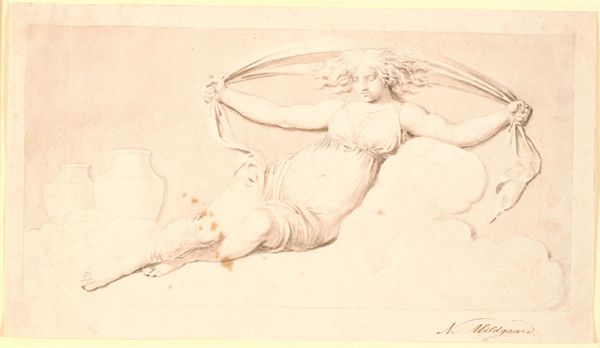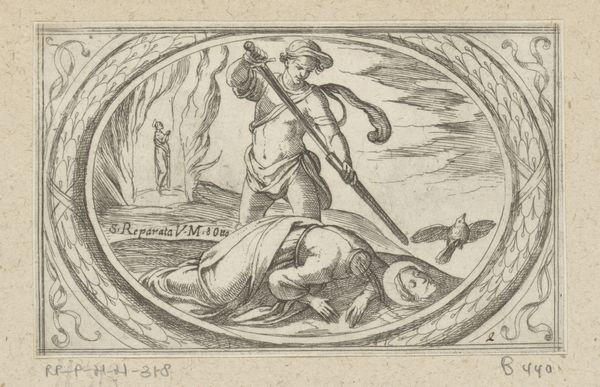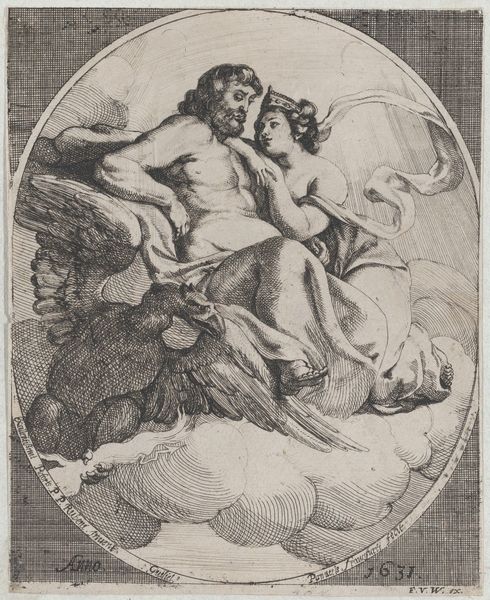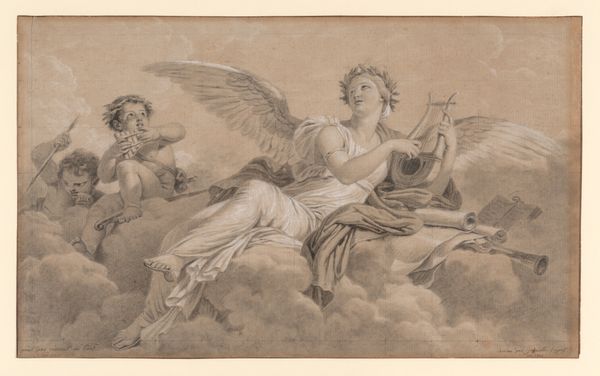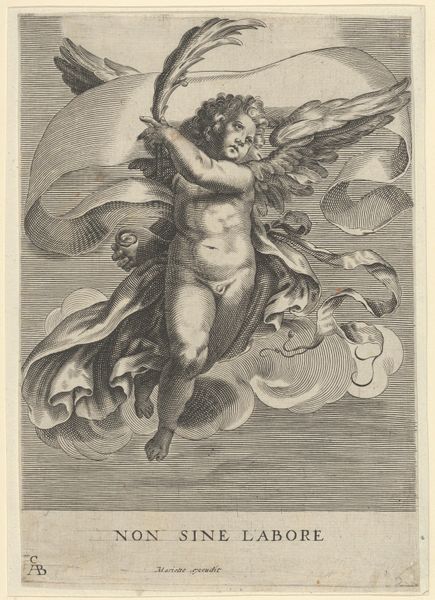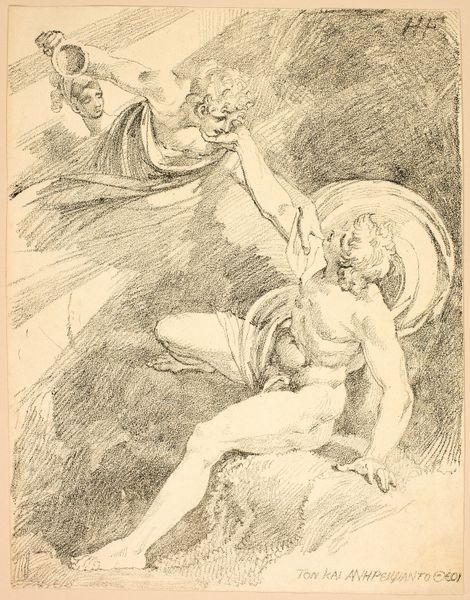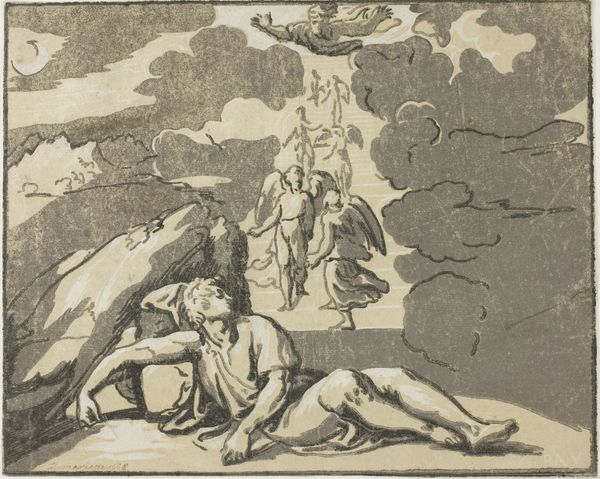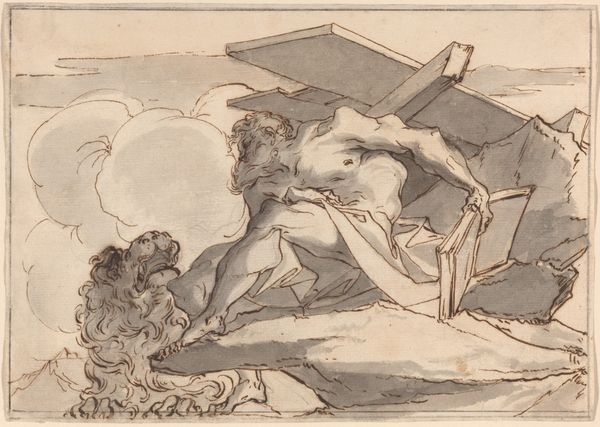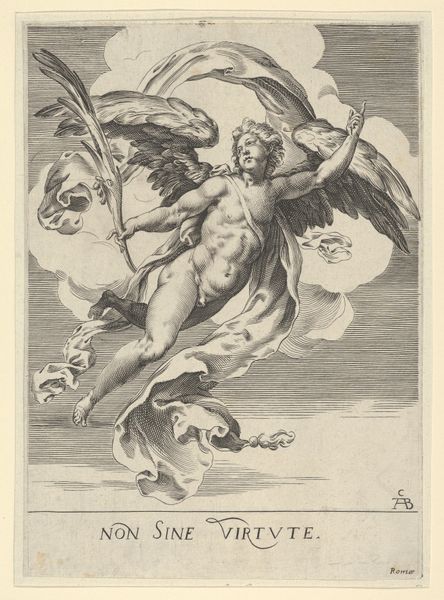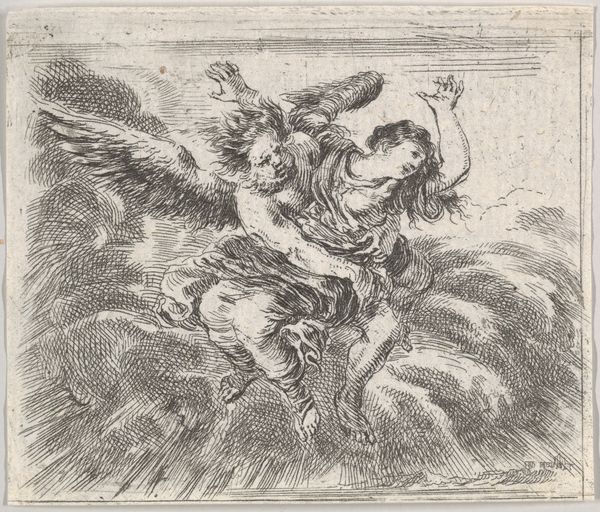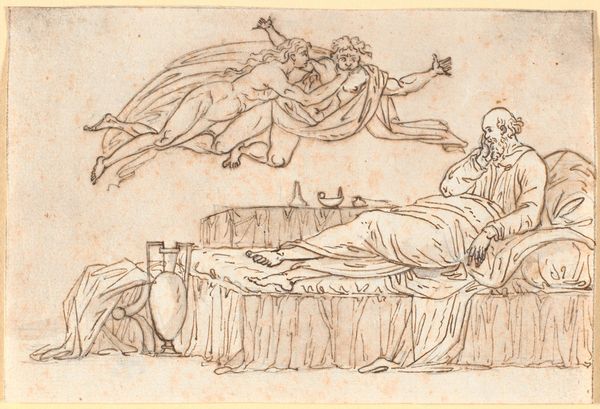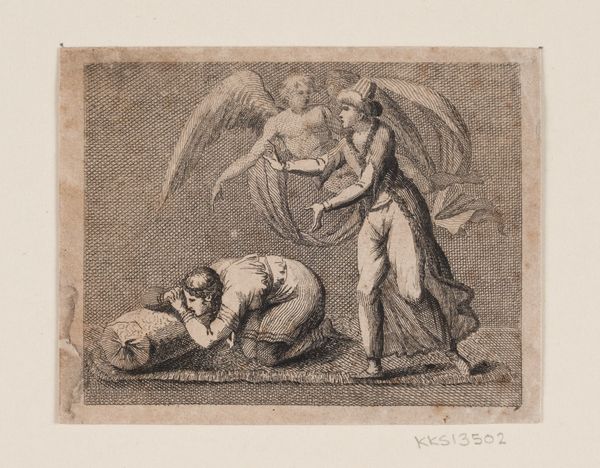
Natten, en hvilende kvinde med flagermusvinger 1743 - 1809
0:00
0:00
Dimensions: 180 mm (height) x 315 mm (width) (bladmaal)
Editor: This drawing, "The Night, a reclining woman with bat wings," is by Nicolai Abildgaard, created sometime between 1743 and 1809 using ink on paper. The figure is intriguing, but I’m curious about those seemingly mundane vases... What catches your eye when you look at this work? Curator: Immediately, I’m drawn to the process of its making. Consider the paper itself – the sourcing, the rag content, its value as a commodity. And ink: How was it produced? Was it a readily available supply or a more precious commodity at that time? These choices illuminate the context of artistic production, speaking to the resources and economic realities available to Abildgaard. Editor: That’s an interesting approach. I was more focused on the classical figure and the allegory of night. The bat wings feel…almost Gothic, juxtaposed with the classical form. Curator: Yes, and consider that contrast within the lens of labor. Was the artist working on commission? If so, the demands of the patron directly influenced the subject and style, impacting the physical labor and artistic choices. What expectations were there? Where would this drawing eventually exist and who might consume it? Editor: So, you’re saying the materials and means of production tell as much of a story as the imagery itself? Curator: Precisely. And more, how readily available were drawing skills to those not within the dominant economic order of the time? What barriers to training existed, shaping not only the artwork’s materiality but the potential artistic voices of the period? Even seemingly simple lines of ink present a network of material and social relationships. Editor: I never considered the socioeconomic aspect to this extent! Now, I'm seeing beyond just the imagery, questioning access, and the cultural factors involved in creating even a simple ink drawing like this one. Thanks. Curator: Indeed. It’s about seeing the world *in* the art, not just *on* it.
Comments
No comments
Be the first to comment and join the conversation on the ultimate creative platform.
